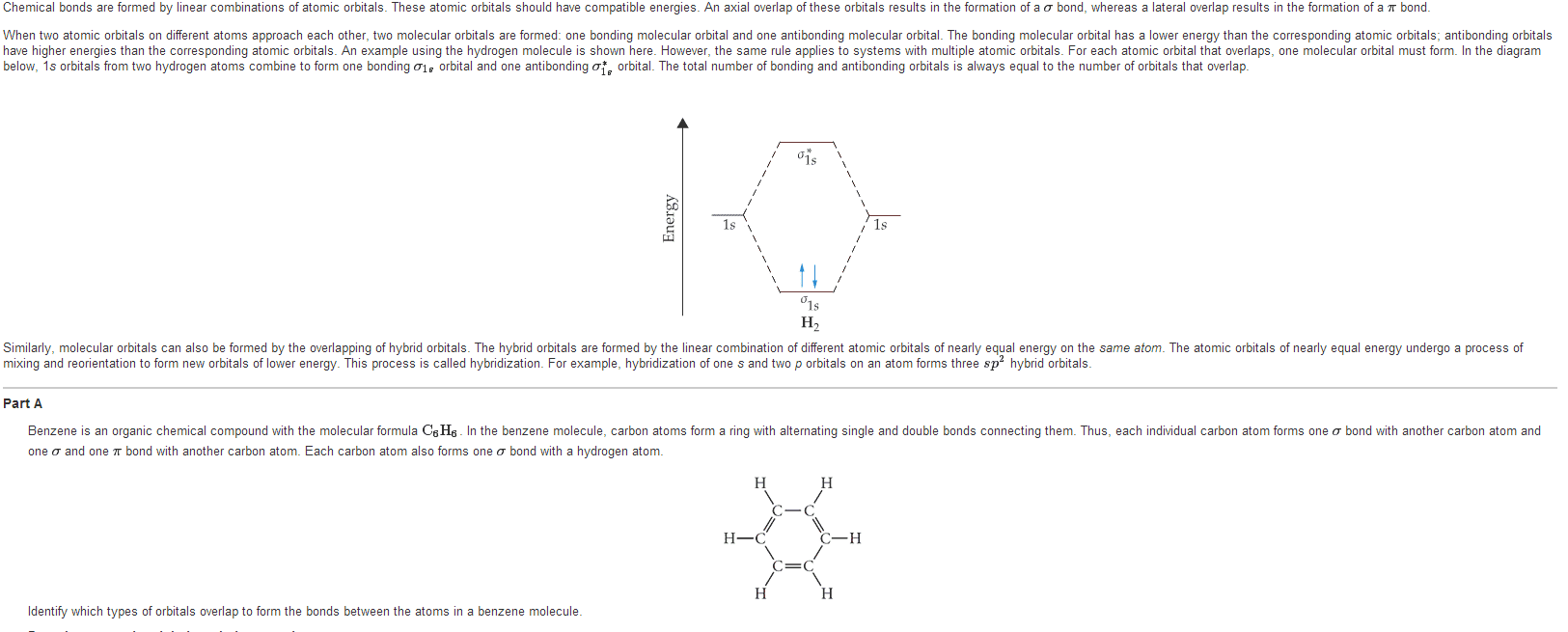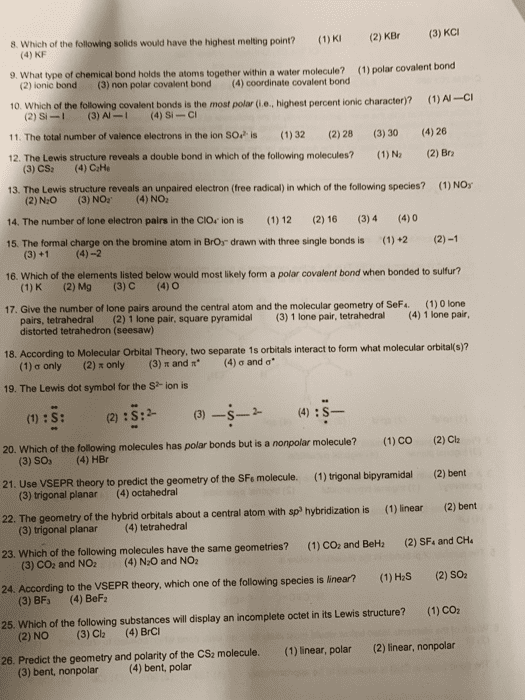CHEM 1211 Lecture Notes - Lecture 7: 3 Ft Gauge Rail Modelling, Electronic Program Guide, Covalent Bond
47 views4 pages
25 Oct 2017
School
Department
Course
Professor
Document Summary
Valence bond theory and hybrid orbitals: vsepr does not address atomic orbitals, valence bond theory. Quantum mechanics-based theory of bonding that assumes covalent bonds form when half-filled orbitals on different atoms overlap. This mixing process is called hybridization: the resulting orbitals created in the hybridization process are called hybrid. Orbitals: the number of resulting orbital must be equal to the number of orbital that were mixed. Sigma bond--the bonds formed have their electronic density along the axis joining the two nuclei (cylindrical symmetry) A set of the three hybrid orbitals with trigonal planar orientation produced by mixing one s and 2 p obitals. Slightly lower in energy than sp2 hybrid orbitals. A covalent bond in which electron density is greatest above and below the bonding axis. Pi bonds have a nodal plance that passes through the nuuclei. A set of two hybrid orbitals with linear orientation produced by mixing one s and one p orbital.
Get access
Grade+20% off
$8 USD/m$10 USD/m
Billed $96 USD annually

Homework Help
Study Guides
Textbook Solutions
Class Notes
Textbook Notes
Booster Class
40 Verified Answers
Class+
$8 USD/m
Billed $96 USD annually

Homework Help
Study Guides
Textbook Solutions
Class Notes
Textbook Notes
Booster Class
30 Verified Answers
Related textbook solutions
Chemistry: Structure and Properties
2 Edition,
Tro
ISBN: 9780134293936
Basic Chemistry
5 Edition,
Timberlake
ISBN: 9780134138046
Principles of Chemistry Molecular Approach
4th Edition,
Tro
ISBN: 9780134112831
Principles of Chemistry Molecular Approach
3rd Edition, 2014
Tro
ISBN: 9780321971944
Chemistry: Structure and Properties
2nd Edition,
Tro
ISBN: 9780134293936
Chemistry: A Molecular Approach
3rd Edition,
Tro
ISBN: 9780321809247
Chemistry: A Molecular Approach
5th Edition,
Tro
ISBN: 9780134874371
Principles of Chemistry: A Molecular Approach
4th Edition,
Tro
ISBN: 9780134895741
Chemistry: The Central Science
14th Edition, 2017
Brown
ISBN: 9780134414232

